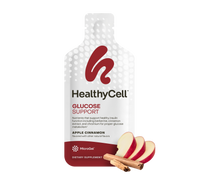Joint pain is often seen as a certainty that comes with aging, according to the mainstream viewpoint of modern society.
The CDC shares on its website that about fifteen million people report experiencing severe joint pain. That amounts to one in four people with arthritis in total.
Additionally, about half of U.S. adults report that they suffer from “persistent pain” from arthritic joints.
Arthritis typically affects the smallest joints first, such as fingers and toes, but later can spread to wrists, knees, ankles, elbows, hips, and shoulders, according to a report from the Mayo Clinic.
Often, the progression of arthritis is seen as something that could be improved.
What most don’t realize is that it is possible to turn the tables on arthritis, stopping it in its tracks and restoring health and flexibility to several different systems of the body.
What Causes Joint Pain, Aches, and Stiffness
The cause of arthritis is a frightening one at first thought.
Most types of arthritis are thought to be caused by a problem with the immune system that causes the body to attack its own tissues in the joints.
Genetics can play a factor, although genetic-related health problems are not final, as the science of epigenetics tells us.
Disease conditions such as gout and health problems such as obesity, being overweight, physical trauma, and injuries may also play a role in the formation of arthritis.
Arthritis is more likely to develop in smokers and those who don’t exercise enough.
It can happen in younger people but is typically more common in older people. The average age of arthritis diagnosis is between 30 and 50.
Once the arthritic response begins, inflammation, caused by inflammatory foods, toxins, trauma, and inactivity, among other causes, can cause flare-ups or pain. Eliminating or reducing inflammation on a day-to-day, hour-to-hour basis is one of the best ways to stop arthritis at the source for a better quality of life and range of motion.
How to Lower Inflammation Naturally
Lowering inflammation naturally is a constant balancing act that sometimes requires taking action and other times requires relaxing and de-stressing.
The bad news is that inflammatory foods and habits are a consistent part of our daily lives.
The good news is that the human body always seeks homeostasis, or balance, which can improve with our daily actions.
Some telltale signs of inflammation include pain, heat, redness, and swelling, so be sure to monitor your body for these signs to know when to change any inflammation-causing habits.
The following are tips for reducing inflammation:
- Sleep well: Aim for eight hours a night or as directed by a physician. Some people need more sleep, and others need less.
- Prioritize hydration: Water helps to keep our joints lubricated and assists in transporting nutrients to where they are needed. Choose filtered or spring water. Staying hydrated can also help you regulate your blood pressure. To learn more, check out Can Dehydration Cause High Blood Pressure?
- Avoid inflammatory foods: Cakes, cookies, processed foods, and anything containing trans fats or genetically modified ingredients like non-organic corn, soy, canola, and sugar should be avoided. Reducing or eliminating sugar also helps.
- Eat more anti-inflammatory foods: Eat a wide variety of fruits and vegetables, preferably organic, which constitute all of the rainbow's colors. According to the Women's Health Network, a Mediterranean-style diet is the best place to start.
- Be active: Going for walks is one of the best ways to improve your overall health and prevent arthritis. Going for walks in oxygen-rich areas like parks, forests, and near open waterways is especially helpful. Sports also are a great choice. However, ensure you have the proper footwear, protection, and nutrition to avoid joint-related and other physical traumas while playing.
- Avoid chemicals: Some of the key chemicals to avoid include benzene, a byproduct of crude oil; gasoline and cigarette smoke; glyphosate, which is found in non-organic foods. And chemicals like ammonia, ethylene glycol monobutyl acetate, sodium hypochlorite, and trisodium phosphate are found in synthetic, toxic cleaning products.
- Maintain a healthy weight: The healthiest weight for each person varies according to many different factors depending on age, body type, environment, and more. Start by using the Adult BMI (Body Mass Index) Calculator on the CDC’s website, found here.
- Lower stress levels: Stress often leads to unhealthy coping mechanisms like overeating, cigarette smoking, drugs, overconsumption of alcohol, and similar issues. Prioritize healthy habits to minimize stress, such as prayer, meditation, exercise, and socializing, to negate the unhealthy stress response as much as possible. Yoga, stretching, and music are great ways to find tranquility daily.
- Consider taking clinically proven supplements: Not all supplements are created equal. For example, Healthycell's Joint Health & Mobility blend is scientifically formulated with synergistic ingredients that are hard to find separately.
Learn more or purchase the Joint Relief & Mobility blend here.
The Joint Health & Mobility blend contains a blend of potent extracts and lubricating nutrients including Curcumin, Omega-3, Collagen Precursors, Chondroitin, Glucosamine and Hyaluronic Acid for healthy joint performance, comfort, and range of motion.†
Healthycell's Joint Relief & Mobility is available for purchase here: Joint Health & Mobility.
About the Author
Dr. Giampapa is a world-renowned medical doctor, inventor, and surgeon specializing in anti-aging medicine. He recently received a nomination for the Nobel Prize for his groundbreaking stem cell research, as well as the Edison Award for the Healthycell nutritional supplement for cell health. He was also awarded the A4M Science & Technology award for his development of the BioMarker Matrix Profile – the first computer program to measure aging.




